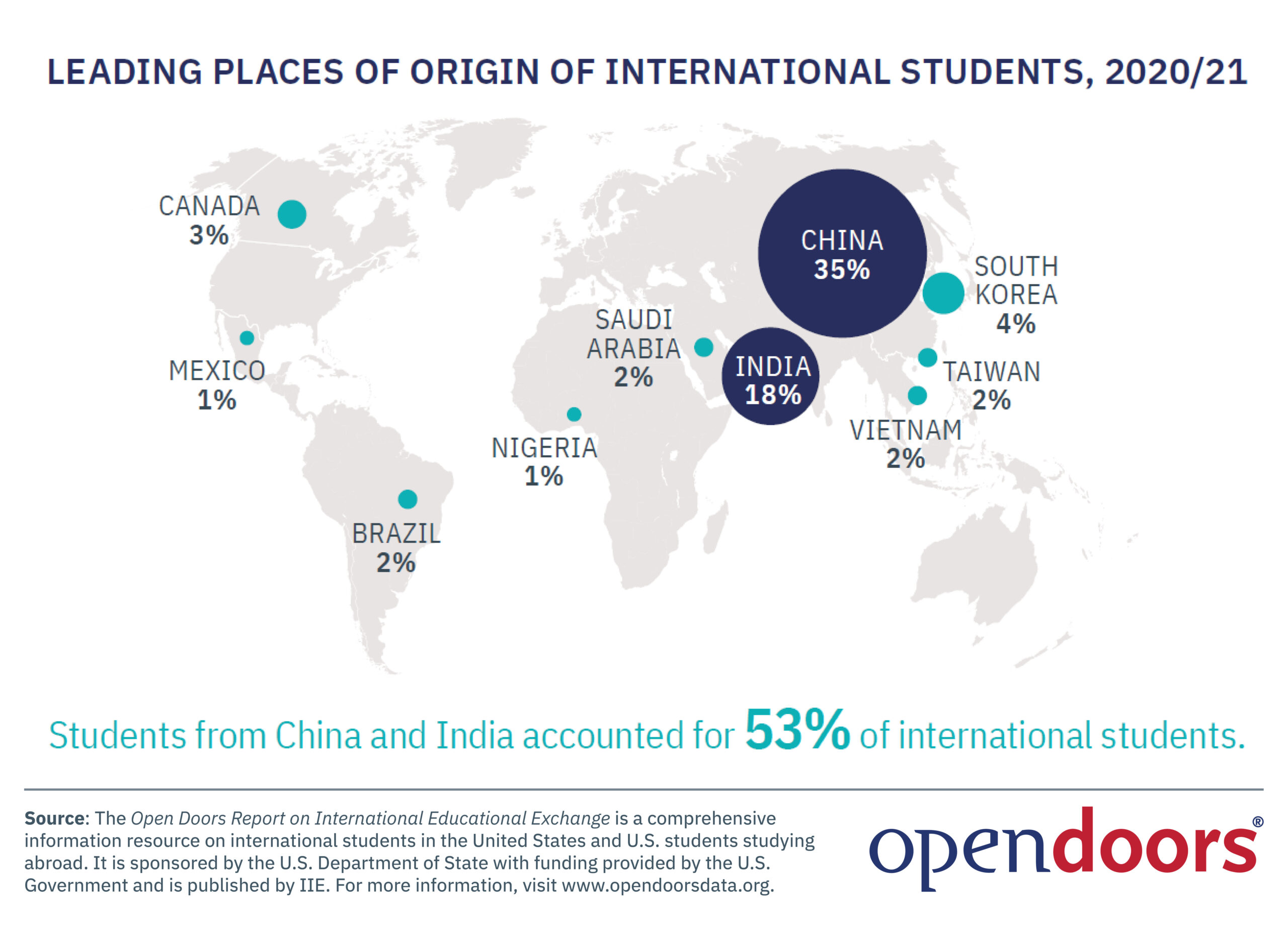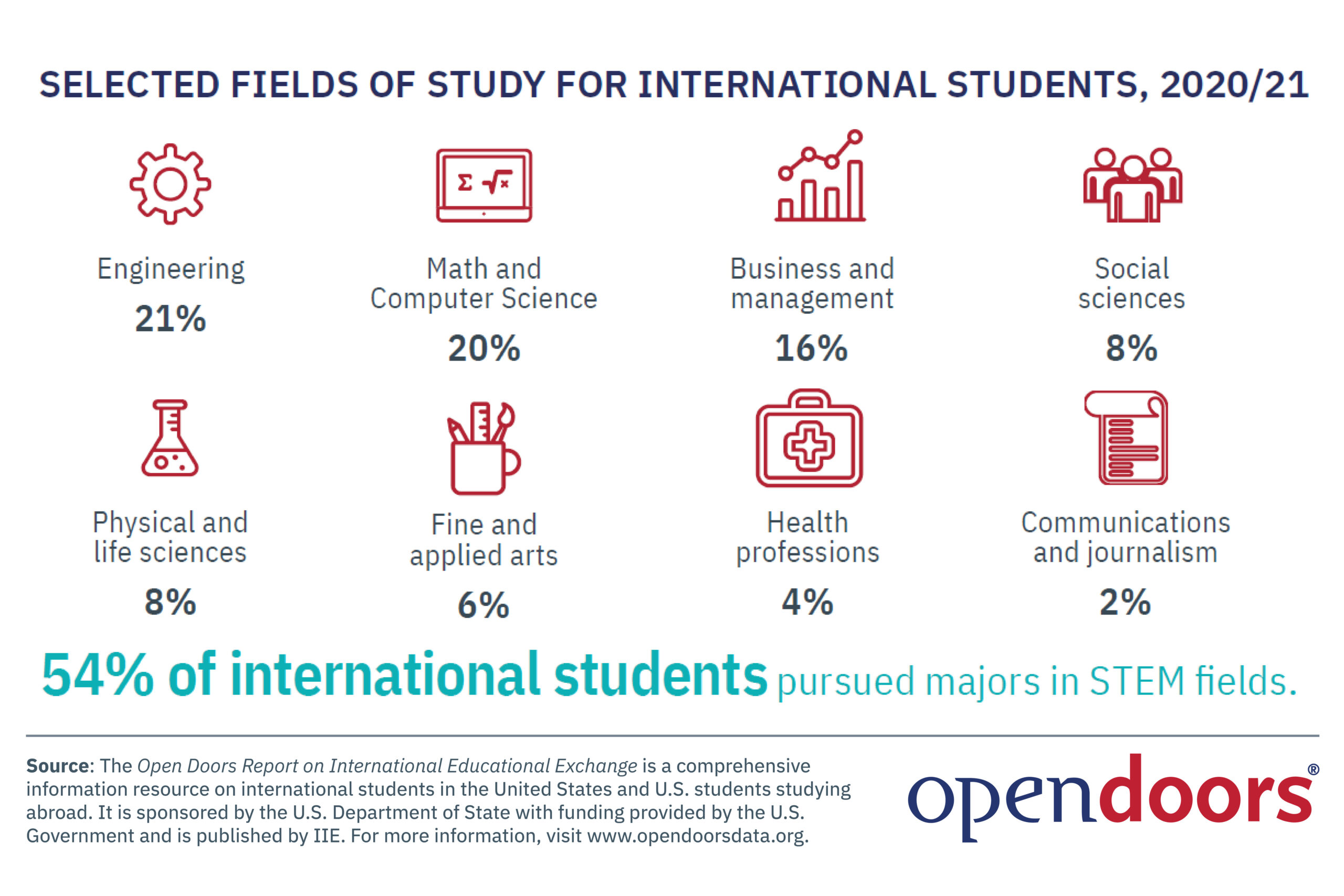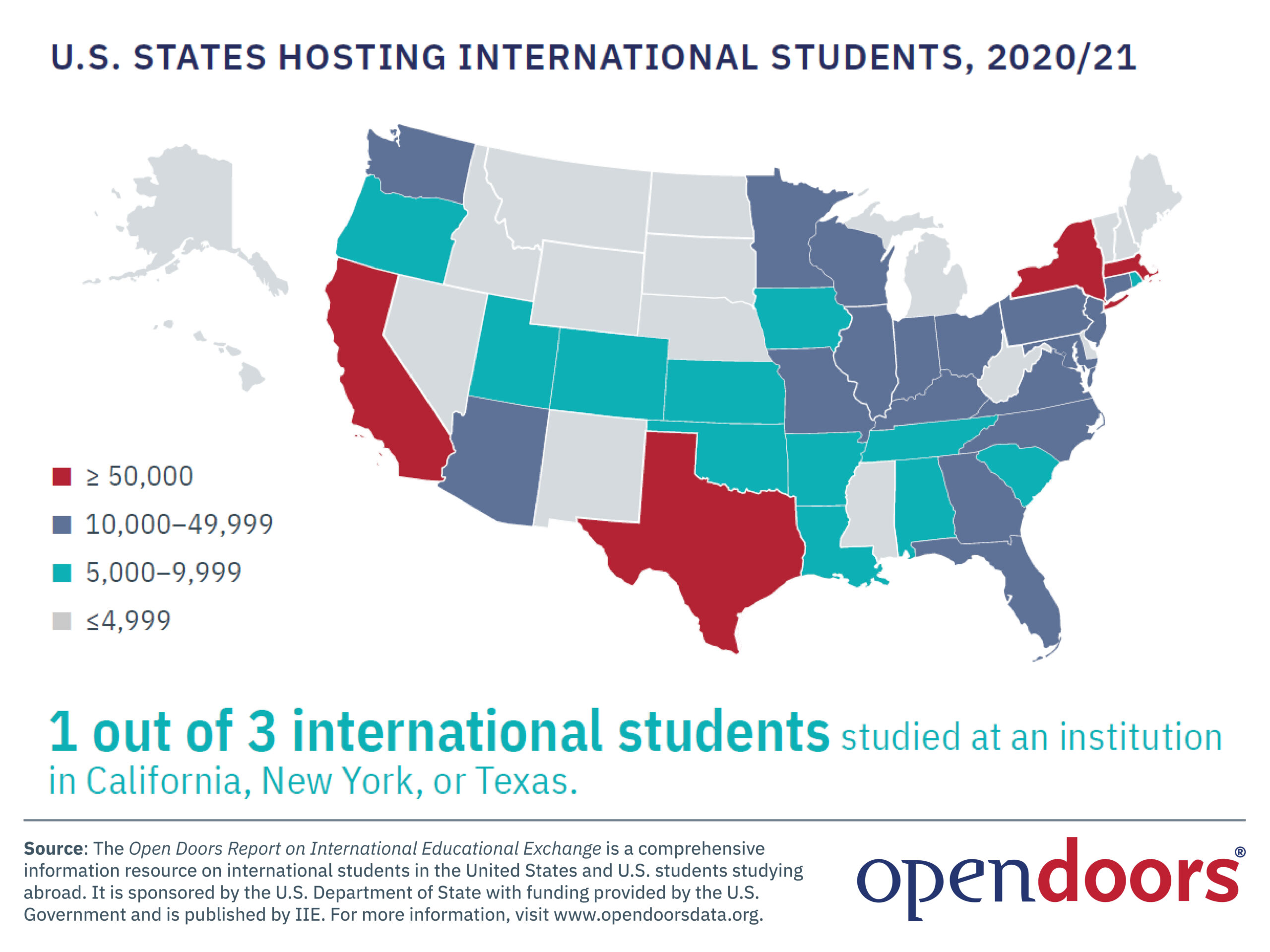The Institute of International Education released its annual Open Doors Report on Monday, providing key data points in the evolution of student mobility, interest and pursuit of higher education, both in the United States and study abroad during the global pandemic.
The number of international students coming to the United States fell sharply from 2019-20 (1,075,496) to 2020-21 (914,095), when COVID-19 ravaged opportunities. The most jarring was the 46.5% drop in new student enrollment, not surprising given the shutdown of travel. But higher education did well to serve students, including those that remained on campuses and those they could reach remotely.
“The COVID 19 pandemic disrupted the international educational landscape on a global scale that had not happened before,” said Dr. Mirka Martel, head of research at IIE. “Universities showed flexibility in offering many of these students the opportunity to begin or continue their studies online. Despite challenges related to health and safety and travel restrictions, over 145,000 international students were able to begin their studies in the United States or online from abroad.”
But after three consecutive years of steady representation among the overall U.S. higher ed population at 5.5%, last year saw a drop to 4.6%, or 19 million students. The hope is that as travel restrictions are lifted those numbers will rise again. A Snapshot preview from the IIE and U.S. Department of State hints that is occurring.
University Business offers a closer look at data from five areas of the Open Doors Report where international study was most affected:
Countries where international students were affected
Getting students to the U.S. was a challenge throughout the world but particularly in five countries: Germany (-42%), France (-33.4%), Japan (-32.9%), Saudi Arabia (-29.2%) and Spain (-27.3%), especially as many countries in Europe struggled to contain the novel coronavirus and locked down. Japan’s decline was notable because of the cancellation of many Intensive English Programs. Martel noted that non-degree studies fell by 64%.
The countries with the most representation in the U.S. international student system all fell by double digits, led by South Korea (20.7%), China (-14.8%) and India (-13.2%). China continued to send the most students to U.S. institutions with more than 317,000 in 2020-21.
Fields of study
Engineering, along with math and computer science, continues to be the top field of interest among international students. All nonetheless experienced double-digit drop-offs in enrollment during 2020-21, falling below 200,000 students after being above that level in 2019-20. Business and management help comprise another 16% of students pursuing education in the U.S. and was hard hit, falling more than 16%.
Institutions that continued to serve
Of the 703,000 international students (not including those involved in Optional Practical Training), these were the Top 10 institutions welcoming international students in 2020-21:
- New York University, 17,050
- Northeastern University, 15,880
- Columbia University, 15,015
- University of Southern California, 14,992
- Arizona State University, 13,015
- University of Illinois at Urbana-Champaign, 12,838
- University of California at San Diego, 10,824
- Boston University, 10,646
- Purdue University (West Lafayette), 10,500
- University of California at Los Angeles, 10,273
Study abroad
Matthew Lussenhop, Acting Assistant Secretary for the Bureau of Educational and Cultural Affairs at the U.S. State Department, noted that “the global pandemic essentially halted all international travel for U.S. students,” affecting more than half of the nearly 350,000 participants. The Open Doors data on study abroad (2019-2020) is typically a cycle behind the other international student findings, but it does include that spring/summer information from early in the pandemic.
During the spring/summer of 2020, study abroad summer programs fell by 99% (a drop from 134,000 to about 1,300). More than 860 institutions noted that 55,000 students were returned home safely. Among the areas seeing the biggest drops during those stages of the pandemic were China (-79%), Greece (69%), Japan (-62%), Germany (62%), Ireland (60%), South Africa (59%), Chile (58%) and South Korea (57%). Though not likely to return to pre-pandemic levels, the 2020-21 data should be more promising, according to Lussenhop.
How states fared with changes
The state that hosted the most students in 2020-21-California at 132,758-sustained a more than 17% decrease in international enrollment, a pattern that held true for top 10 hosts, which all saw double-digit declines. Utah fared the best, losing less than 1% of those students, despite hosting a third of them from China. Arizona saw only a 6% drop-off, led by the ever-nimble Arizona State University, which hosted more than 13,000 in some capacity. Maryland lost just under 8%, while Maine had a less than 4% decline but only hosted a little more than 1,400 students. The two that struggled the most to maintain international student bases were Delaware (-47%) and Montana (-36%).












